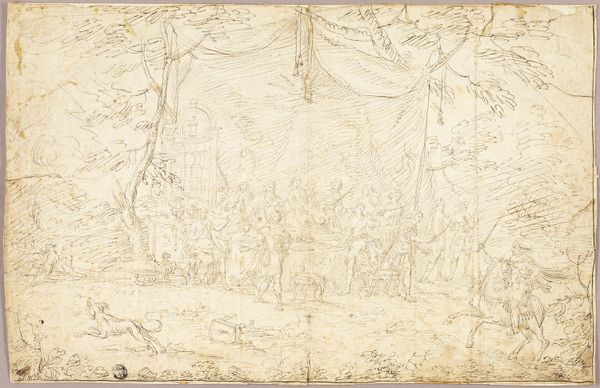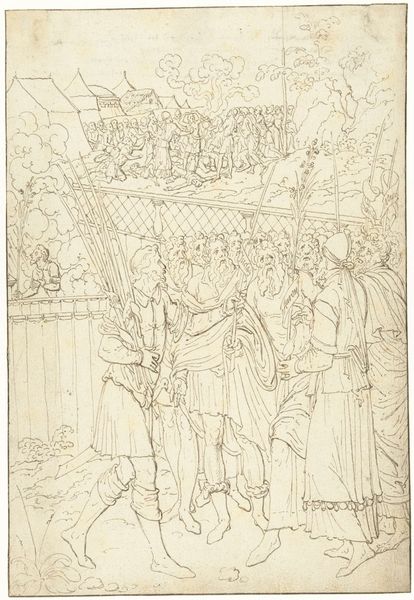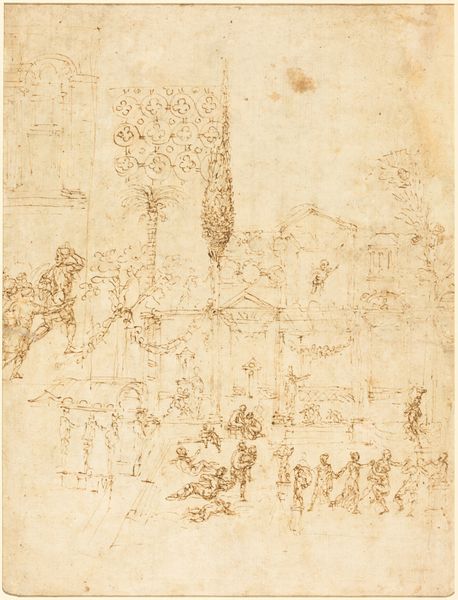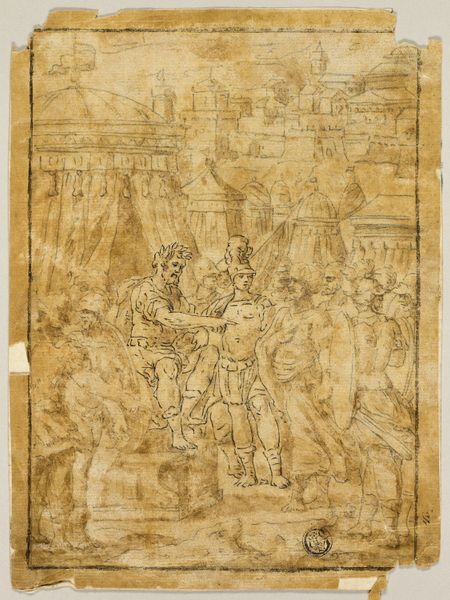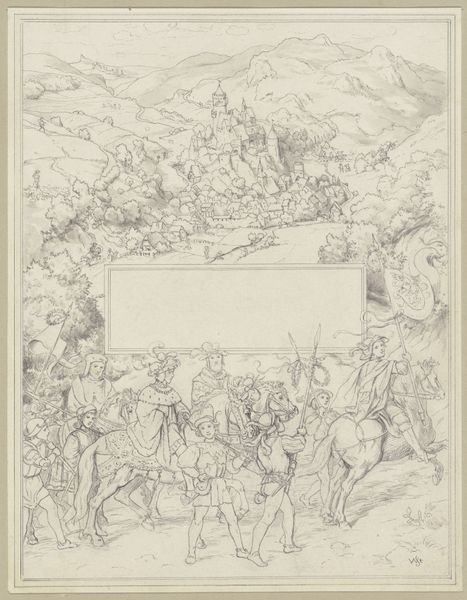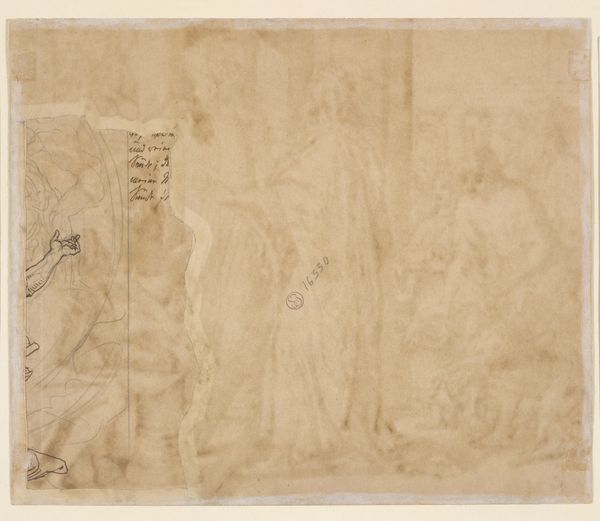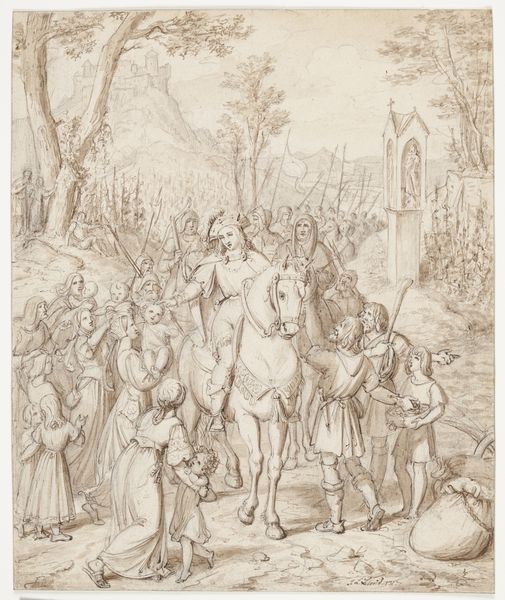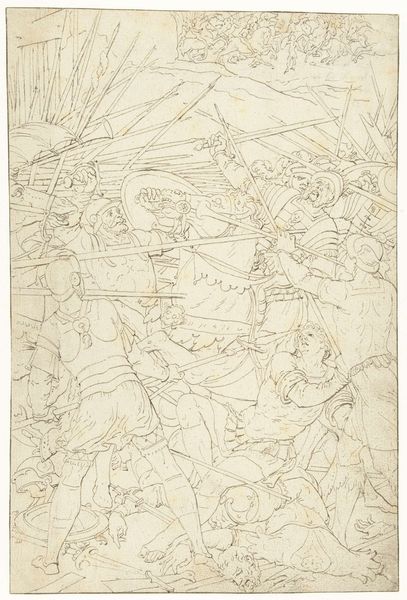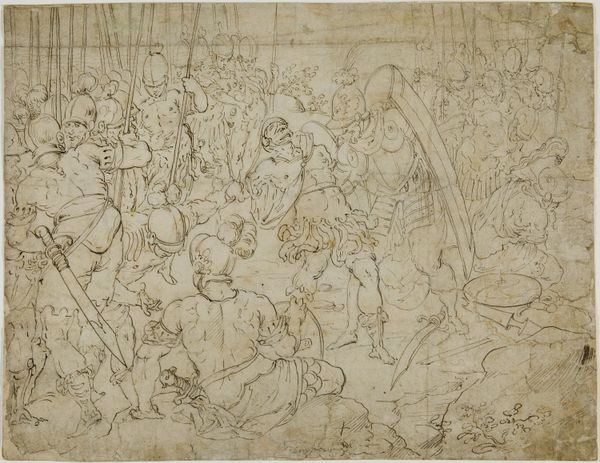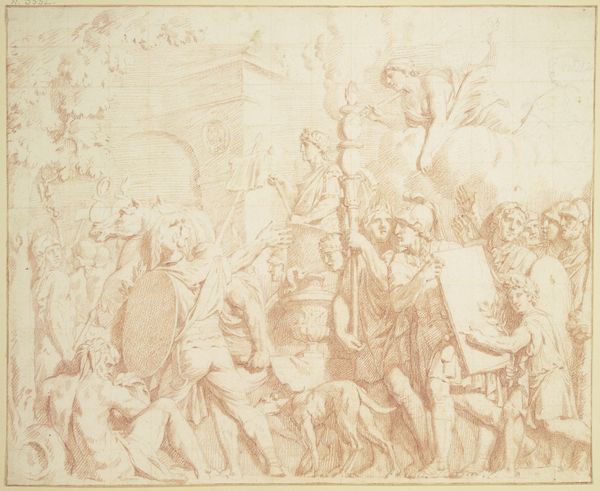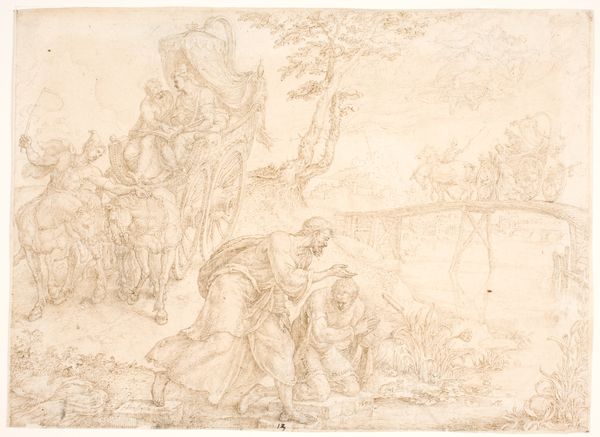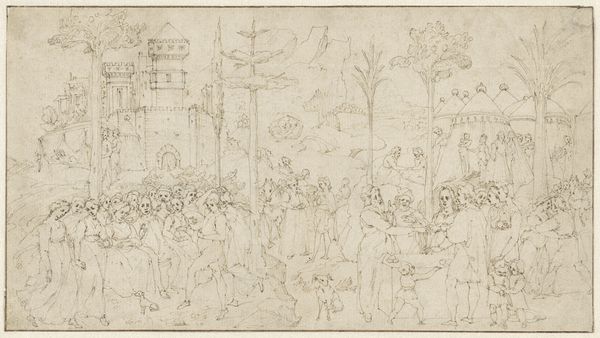
drawing, tempera, ink
#
portrait
#
drawing
#
narrative-art
#
tempera
#
landscape
#
figuration
#
11_renaissance
#
ink
#
history-painting
#
italian-renaissance
Dimensions: overall (approximate): 27.2 × 19.9 cm (10 11/16 × 7 13/16 in.)
Copyright: National Gallery of Art: CC0 1.0
Curator: Looking at this ink and tempera drawing, “The Martyrdom of Saint Alexander of Bergamo” by Lorenzo Lotto, circa 1524, one is immediately struck by the rawness of the scene depicted. Editor: Yes, the flurry of lines conveys a stark sense of violence. It's gestural, and almost brutally immediate in its effect. But what is the cultural context here? How was martyrdom represented at that time, and what does Lotto bring to it? Curator: Well, Lotto was painting in Bergamo at a time of intense civic pride and religious fervor. Alexander was the patron saint of the city, so this work, intended as an altarpiece, reinforced civic identity while promoting religious devotion, all within the frame of the Bergamascan historical narrative. He is the lynchpin between military identity and religious veneration in that cultural context. Editor: That resonates with how Lotto stages the scene – a collision between the earthly and the divine. Look at the saint presented in isolation at the front of the scene: then notice how, if you keep looking, a whole history unfolds behind him. The angels hovering overhead, representing divine intervention, and in the background, multiple depictions of Roman soldiers are carrying out executions on a hill, reminding me a little bit of war propaganda or the type of violent paintings that came out of revolutionary France. Curator: Precisely. Consider too how Lotto has used the materiality to create a heightened, emotional connection with the scene. This artwork becomes more than an illustration, its graphic qualities become a crucial feature: Alexander, caught at the exact moment he will meet his end, encapsulates the complexities and tensions that underline devotion and persecution as a key framework to define an experience, a belief. The drama underscores the moral dimensions within Bergamascan society. Editor: Indeed, what makes Lotto’s work so powerful is his ability to imbue history with emotional resonance. Rather than simply documenting the facts, he used art to comment on the ongoing political climate of the region through both religious and personal iconography. Thank you for bringing the history alive! Curator: The pleasure was mine.
Comments
No comments
Be the first to comment and join the conversation on the ultimate creative platform.
